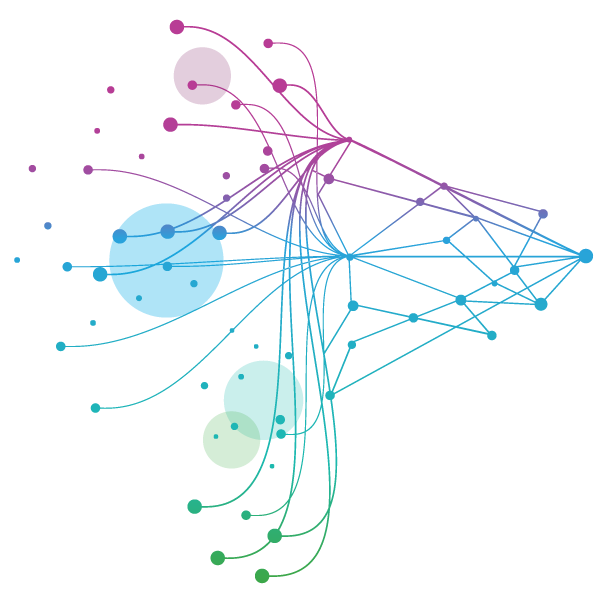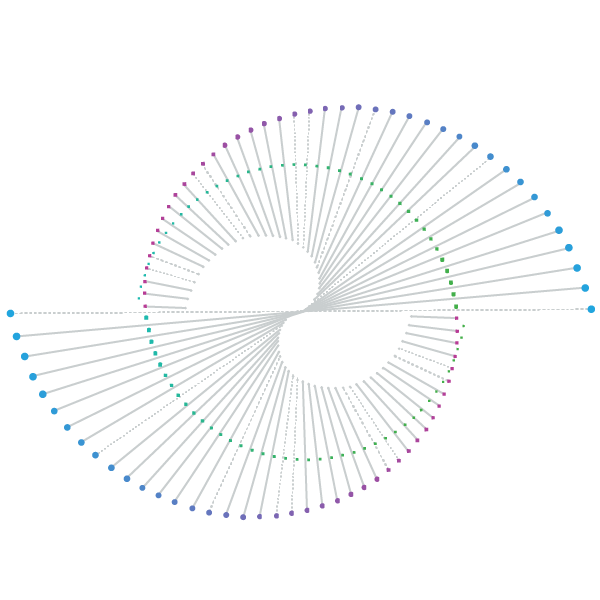





















Key points
1. Currently, health data sharing is difficult: Fragmented data systems, standards and legal barriers lead to underutilized data. This limits research, innovation, and patient care.
2. The EU is transforming health data access: A series of legislative initiatives, including the Data Governance Act, Data Act, and European Health Data Space, aim to streamline data access, its governance and foster innovation. These are complemented by research data-sharing initiatives: the European Open Science Cloud and biobanking.
3. This will impact citizens and organisations across the EU: New regulations will require health data holders to share information within a unified infrastructure for re-use by others.
Current Health Data Landscape
The current health data landscape in the EU is characterized by fragmented and protected data silos and systems, much of which is on paper. This makes it challenging for patients to access and control their health records across providers and for third parties to access health data for research and innovation. Complex ethical and legal barriers, particularly the varied application of the General Data Protection Regulation (GDPR) across Europe, further complicate data sharing. This leads to the majority of data being underused.
Figure 1. Limitations of data sharing in the current health data landscape

Reshaping the health data landscape
The EU’s action seeks to address the above problems and use data to power healthcare, research and economic growth across the bloc. It will reshape the landscape via the following initiatives:
Figure 2. EU data sharing initiatives and their impacts

1. Data Governance Act (DGA)
The DGA, applicable in 2023, aims to improve data-sharing by laying down rules and mechanisms:
- Facilitating access to and reuse of protected public sector data: The DGA introduces conditions and mechanisms to enable access to and reuse of protected public sector data, such as health data, including a searchable database. While the Act does not create an obligation for public sector bodies to allow the reuse of protected public sector data, it sets forth basic conditions under which such data reuse may be permitted. This aims to make valuable data more accessible while ensuring privacy and security.
- Member States must establish technical capabilities for secure data processing, including the capability for anonymization, pseudonymization, and establishing secure data processing environments.
- Enabling data altruism organizations: The Act encourages citizens and stakeholders to make their data available for common good causes like research, healthcare, and education, by codifying data altruism organizations into law.
- Regulating data intermediaries to ensure secure data sharing: The DGA sets out measures to establish and regulate data intermediaries who connect data holders with data users and host infrastructure for data sharing. These intermediaries will be subject to strict requirements to prevent data misuse and ensure secure data sharing.
2. Data Act
The Data Act will become applicable in September 2025, it addresses legal and technical barriers to data use by:
- Granting users access to data generated by their connected devices: Users will have the right to access raw data generated by their connected devices and related services, such as medical devices, and share it with third parties. This aims to support innovation and aftermarket services.
- Protecting SMEs from unfair data-sharing contracts: The Act includes provisions to protect small and medium-sized enterprises (SMEs) from unfair terms in data-sharing contracts imposed by larger entities. Model contract terms will be provided to help SMEs negotiate fair deals.
- Allowing public sector access to private sector data in emergencies: Public sector bodies will be able to access and use source data held by private entities during exceptional circumstances, such as emergencies. This ensures that critical data is available when needed most.
- Facilitating easier switching between cloud services: The Act introduces measures to make it easier for users to switch between data service providers, including interoperability standards and contractual obligations. This aims to prevent vendor lock-in and promote competition.
3. European Health Data Space (EHDS)
The EHDS, the most revolutionary of the initiatives, which entered into force in March 2025, aims to create a single digital health data infrastructure across the EU, which includes:
- Accessible electronic health records for data use: interoperability and access requirements will be put on electronic health records, enabling individuals to control their health records and seek care across providers and EU countries.
- Liberalising access to all health data for data re-use: The EDHS provides mechanisms, and legal frameworks for accessing health data held by individuals and organisations, with few exceptions, for research, policy informing and innovation purposes. This includes data from health records, clinical trials, wellness applications and administrative data, promoting innovation and improving healthcare outcomes. More information on how the EHDS will affect organisations can be found here.
While individuals have the right to opt-out of their data being used or re-used, emergency situations may override this, and Member States can apply additional safeguards for sensitive data. Access to personal health data will involve stricter restrictions and safeguards to ensure privacy. In contrast, non-personal health data is envisioned to be much more accessible, via a central database(s). Existing data sharing contracts and processes will not be directly affected by the EHDS, which adds rather than replaces data sharing rules and infrastructure.
Implementing EHDS will be challenging: there is a balancing act between protecting intellectual property rights and enabling data access, as companies are required to share commercially confidential data; overcoming the technical barriers of anonymising patient data from diverse sources, and establishing the administrative capacity for data sharing.
4. European Open Science Cloud (EOSC)
Being implemented over the next few years, the EOSC aims to enhance research data sharing and utilization by creating a federated, multi-disciplinary, Open Science digital platform. Although participation is largely voluntary, there is an increasing requirement by funders that researchers adhere to open science policies, which the EOSC facilitates. It links existing data infrastructures and research data into a single platform, enabling researchers to publish, find, and reuse data across disciplines and countries. This should promote collaboration and accelerate scientific discovery. While they are separate initiatives, as the EHDS expands the availability of health data, a streamlined integration with the EOSC will further create data access for health researchers, supporting more effective data-driven research.
5. EU Initiatives for Biobanks
Prominent initiatives like BBMRI-ERIC and EuroBioBank aim to improve and integrate biobanks across Europe, supporting research in genomics, disease biomarkers, and personalized medicine by harmonizing and standardizing biobanking practices and providing comprehensive directories.
Figure 3. Data sharing envisaged by the EU initiatives.
Case Study - Impact of EU Initiatives on Obesity Data Landscape
Context on New Obesity Medicines
The new wave of obesity medicines, such as GLP-1 receptor agonists and dual agonists, have shown significant benefit in reducing weight and hold promise in reducing the risk of other conditions like cardiovascular diseases, certain cancers and even Alzheimer’s disease.
Importance of Data on Obesity Medicines
To fully understand how obesity medicines are used and their long-term effectiveness, access to real-world data (RWD) is essential. Clinical trials primarily focus on shorter-term efficacy and safety data, under controlled conditions, but they do not represent real-world usage. Therefore, by integrating clinical trial data with registry information on obese populations, health records as well as administrative and socioeconomic data, researchers and industry can assess long-term outcomes, differences in effectiveness and safety in sub-populations, and the impact more broadly. Whilst this data may not be enough to answer research questions, it is crucial for shaping the confirmatory studies.
Figure 4. How improved data access can enable research into obesity medicines.

Implications for Stakeholders
Whilst the full realisation of the EU’s initiatives is years away, stakeholders should be aware of what they mean for them.
Patients:
Impact: Patients will gain better access and control over their health data and should benefit from broader innovation, economic growth, and improvements to healthcare that come from the improved use of health data.
Example: A diabetic patient in Germany on holiday in France can seamlessly access and share their health records and glucose monitoring device data with a healthcare professional in France, ensuring continuity of care and personalized treatment plans, regardless of their location.
Preparation: Patients should familiarize themselves with their rights and consider opting out of data sharing for research purposes to contribute to medical advancements.
Healthcare Providers:
Impact: Healthcare providers will benefit from harmonized electronic health record standards and access to a broader pool of health data. This should enable more efficient care provision at the provider level through data-driven management. However, the data they produce will have to be made sharable to others, requiring resources.
Example: A hospital in Spain that has digitalized its health records and applied the EHDS’s interoperability standards can use aggregated health data from across the EU, along with local data, to model care demand such as a projected decrease in diabetes cases or cardiovascular disease.
Preparation: Healthcare providers should ensure their EHR vendor complies with EHR standards, inventory data assets and allocate resources for data management, security and sharing, ensuring they can meet their responsibilities as a health data holder. They should also assess the implications of third parties using their data e.g. for performance benchmarking.
Industry:
Impact: Industry will see enhanced opportunities for innovation through access to new and diverse datasets and improved data analytics capabilities that these and the improvement to AI afford.
Example: A pharmaceutical company in Italy could leverage health data to build a picture of the real-world effectiveness of their products, such as monitoring the performance and outcomes of a new cancer treatment, informing future research and reimbursement.
Preparation: Companies should establish data governance frameworks, invest in data analytics capabilities, and collaborate with healthcare providers and research institutions to leverage the available data for innovation. They must prepare their data assets for registration, assess the risks and opportunities, and ensure compliance. Businesses should implement clear processes for handling data access requests and take proactive measures to protect trade secrets.
Governmental Organizations:
Impact: Governmental organizations will have access to higher quality data to inform better policies, enhance public services, and respond more effectively to health crises.
Example: In the event of a future pandemic, the EU can access and analyse health data from member states to understand common epidemiological or healthcare resource questions.
Preparation: Governments should set out national plans to ensure compliance with new data regulations, including interoperability requirements, funding to establish the new roles and bodies that they are required to, and the support for stakeholders to be compliant.
Research Institutions:
Impact: Research institutions will benefit from using a vast array of health data that was previously not available, either at low cost or for free. They will have support to merge and analyse this data, across borders. This is not only through the legal liberalization of health data but also through the Open Science Cloud and interconnection of biobanks.
Example: Universities and research centres across the EU can collaborate on large-scale studies using shared health data to uncover new insights into chronic diseases like heart disease.
Preparation: Research institutions should invest in data management infrastructure to efficiently handle and analyse the increased access to health data. They need to align with standardized procedures, to improve cross-border collaboration and make the most of open data for research.
Conclusion
The EU's initiatives, including the DGA, Data Act, EHDS, and EOSC, if successfully implemented, will mean a wealth of health data becomes available for re-use. This will enable improved healthcare, research, innovation, and policymaking.
Of these initiatives, the EHDS is likely to be the most transformative, requiring far greater data sharing from health data holders and vastly increasing the availability of health data across borders for research and innovation. However, its implementation faces key challenges.
Therefore, while the potential for a data-driven transformation is substantial, its realisation is not guaranteed. Addressing the complex practical, ethical, and technical challenges associated with these initiatives will determine the extent to which this wealth of data can be responsibly used to improve lives and advance science.
IQVIA is working with clients to navigate these changes, if you would like to know more, please contact us here to discuss this further.





